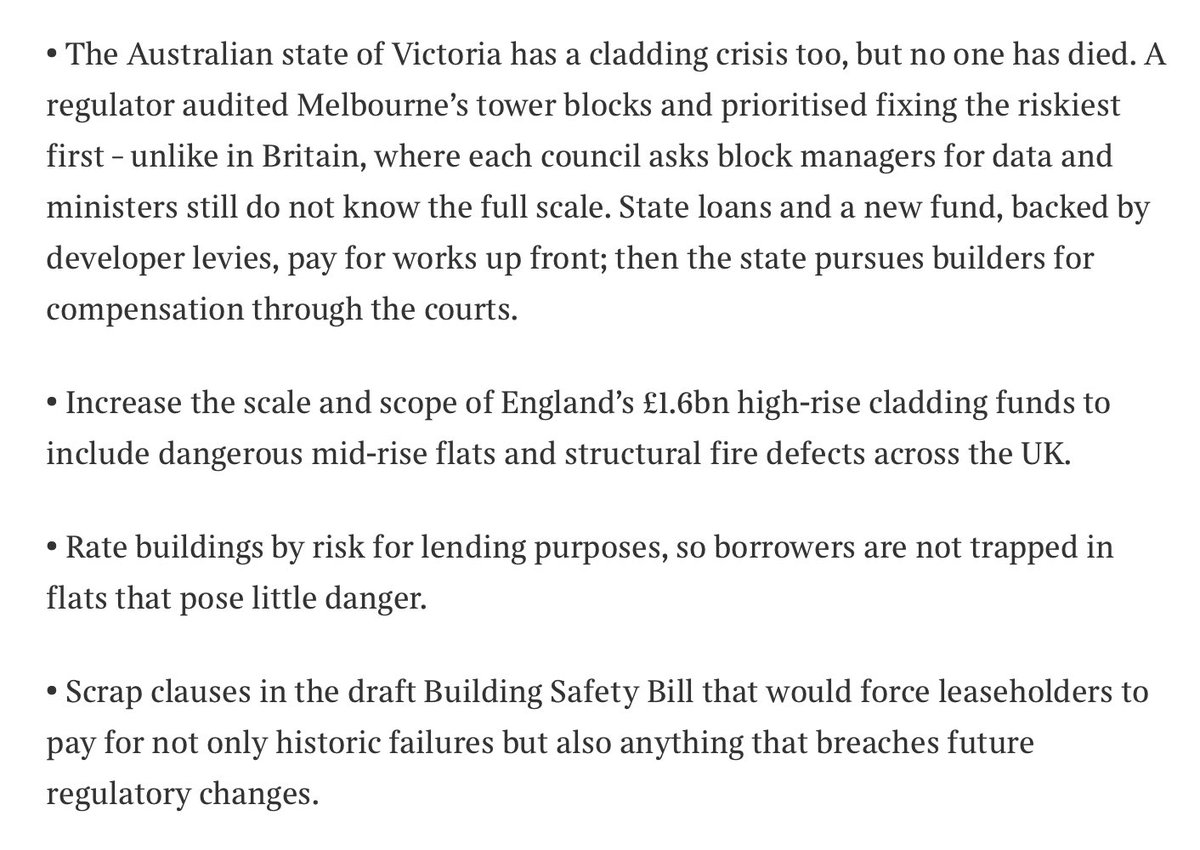Via @Lees_Martina (and @PeteApps ) we now have a sense of how bad the cladding crisis is. The Govt’s (non-ACM) fund for remedial works had 2,957 blocks registered. (The fund would cover about 600 blocks.) That is a quarter of all high rise blocks in England.
Add to that the 300 or so blocks with ACM cladding remaining. These 3257 are the blocks with identified issues, and that met the initial requirements of the Govt’s scheme. There will be more where issues not yet identified.
There will be many more blocks under 18m height with issues as well. Of blocks that have had an EWS1 inspection so far, 92% have failed. Even though it is likely that blocks with known issues, or likely issues, would be inspected first, that is a staggering percentage.
And even for blocks that are OK, mortgage lenders won’t lend without a passed EWS1. There are only 291 inspectors qualified to carry out the inspection. So, as Martina Lees points out, that is the entire modern flat market at a standstill for years.
And the costs of all this? As things stand, the costs will fall on the leaseholders - tens, hundreds of thousand pounds each. (Govt’s £1 billion was for 600 blocks in full). Some blocks may have prospects of recovering from the developers, others from warranties, but many won’t.
This is the result of decades of poor building regulation, appalling construction standards, and govt failures even when presented with the problems.
The draft Building Safety Bill - the Govt’s response, may serve to add some accountability to dealing with issues, but it puts the full weight of payment onto leaseholders, including for historic build defects. This is a certain way to make ensure that problems are addressed &
that the market in modern leasehold flats remains paralysed for years. What does need to be done? The suggestions in @Lees_Martina article thetimes.co.uk/article/thousa… look sensible to me. 

*aren’t addressed. Auto correct...
• • •
Missing some Tweet in this thread? You can try to
force a refresh




